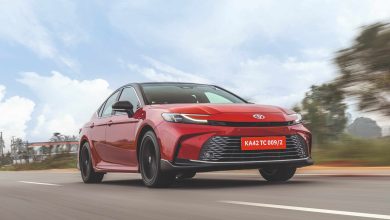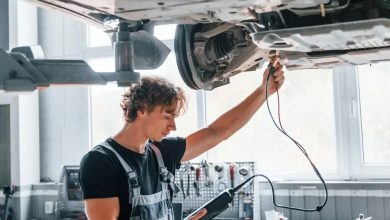The Hidden Stories Behind Every Car Service: What Singapore Drivers Face in 2025

Car maintenance represents far more than routine servicing—it’s a window into the daily struggles, careful calculations, and quiet resilience of ordinary people navigating one of the world’s most expensive automotive landscapes. In Singapore’s relentless urban rhythm, where a simple drive to work costs more than most people’s monthly rent elsewhere, every oil change becomes a financial decision, every brake inspection a moment of reckoning with the true cost of mobility.
Walk into any service centre across the island and you’ll witness a peculiar choreography of hope and anxiety. Here, beneath the fluorescent lights and amongst the mechanical symphony of hydraulic lifts, unfold the real stories of car ownership—stories that reveal as much about social inequality and urban life as they do about engines and transmissions.
The Weight of Every Service Appointment
The average cost of servicing a car is estimated to be about $278 for every 10,000 km travelled, but this figure tells only part of a much larger story. For many Singaporeans, this represents careful budgeting, delayed gratification, and the constant mathematics of necessity versus desire that defines modern life in one of the world’s most expensive cities.
Consider Sarah, a teaching assistant who drives an eight-year-old hatchback. Every six months, she faces the same internal calculation: can she afford the scheduled service, or should she risk pushing it another few thousand kilometres? With basic car maintenance starting at a few hundred dollars annually, but increasing significantly as vehicles age, her story reflects thousands of others who must weigh immediate financial strain against the catastrophic possibility of major repairs.
“There’s only so much you can do on your own, so you’ll need professionals to help you achieve the optimum level of maintenance for your ride,” explains a senior automotive consultant in Singapore. This simple truth carries profound implications for families operating on tight budgets, where professional automotive care represents both essential protection and a significant financial burden.
The Architecture of Automotive Anxiety
The complexity of modern vehicle servicing mirrors the broader complexity of contemporary life. What once might have been simple mechanical work now requires diagnostic computers, specialised training, and equipment worth more than most people’s cars. This technological evolution has created a new form of dependency, where car owners must navigate an increasingly sophisticated landscape of maintenance requirements.
Singapore’s regulatory framework adds complexity to car ownership:
- Annual LTA inspections: Mandatory for all vehicles to ensure roadworthiness and emission standards
- Unavoidable financial obligation: Creates annual moments of reckoning with vehicle condition
- Scheduled confrontation: Car owners must face their vehicle’s maintenance needs, whether financially prepared or not
The Economics of Neglect and Care
The mathematics of vehicle maintenance reveals stark choices that extend far beyond automotive concerns. Regular servicing prevents catastrophic failures, but requires consistent financial commitment that many struggle to maintain. Basic car maintenance starts at a few hundred dollars annually, though costs generally increase as your car ages, creating a financial trajectory that mirrors the broader challenges of ageing infrastructure and escalating costs.
The decision-making process around automotive care reflects broader patterns of economic behaviour:
- Preventive versus reactive approaches: Wealthy car owners schedule regular maintenance without financial stress, whilst others wait for problems to manifest, often resulting in higher long-term costs
- Service provider selection: Whether it’s a dealer workshop or a third-party workshop, you can attempt servicing your car at both just to have an initial comparison of which one suits your car and needs best
- Quality versus cost considerations: The tension between immediate affordability and long-term vehicle health creates difficult choices for budget-conscious drivers
- Emergency fund planning: Successful car ownership requires financial reserves that many households struggle to maintain
The Social Infrastructure of Automotive Care

In Singapore’s tightly regulated automotive environment, car servicing creates clear social divisions:
Service Cost Structure:
- Minor services: SGD 100-$200
- Major services: Over SGD 500
- Creates distinct tiers of automotive care access
Workshop Experiences Reflect Social Class:
- Premium facilities: Comfortable waiting areas, courtesy vehicles, casual indifference to costs
- Independent workshops: Community institutions where mechanics know customers’ financial circumstances
- Customer behaviour: Wealthy discuss upgrades; others research necessary versus recommended work with calculators
This disparity extends beyond mere cost differences—it reveals fundamental inequalities in how people experience essential services.
The Ripple Effects of Automotive Decisions
Every automotive maintenance decision creates cascading consequences:
Delayed Service Risks:
- Immediate cost savings versus a potential catastrophic breakdown
- Employment disruption if the vehicle fails unexpectedly
- Childcare and family obligation complications
Proactive Maintenance Benefits:
- Investment in reliability and peace of mind
- Marker of economic security and planning ability
- Prevention of larger financial emergencies
The advice to stay on top of maintenance schedules, whilst practical, requires financial stability that many lack. Vehicle maintenance becomes a clear indicator of economic position—regular care signals security, whilst irregular maintenance often reveals financial stress.
The human stories behind automotive maintenance reveal broader truths about urban life, economic inequality, and the ways that essential services can become sources of both security and anxiety. In Singapore’s expensive automotive landscape, every service appointment represents not just a mechanical necessity but the ongoing negotiation between aspiration and reality that defines modern car ownership.
Understanding these dynamics reveals why successful vehicle ownership requires more than initial purchase—it demands ongoing financial planning, technical knowledge, and social capital to navigate an increasingly complex service environment. For those who manage it successfully, reliable automotive care provides mobility and independence. For others, it becomes another reminder of urban life’s costs and complexities, where even routine car maintenance can feel like a luxury rather than a necessity.




